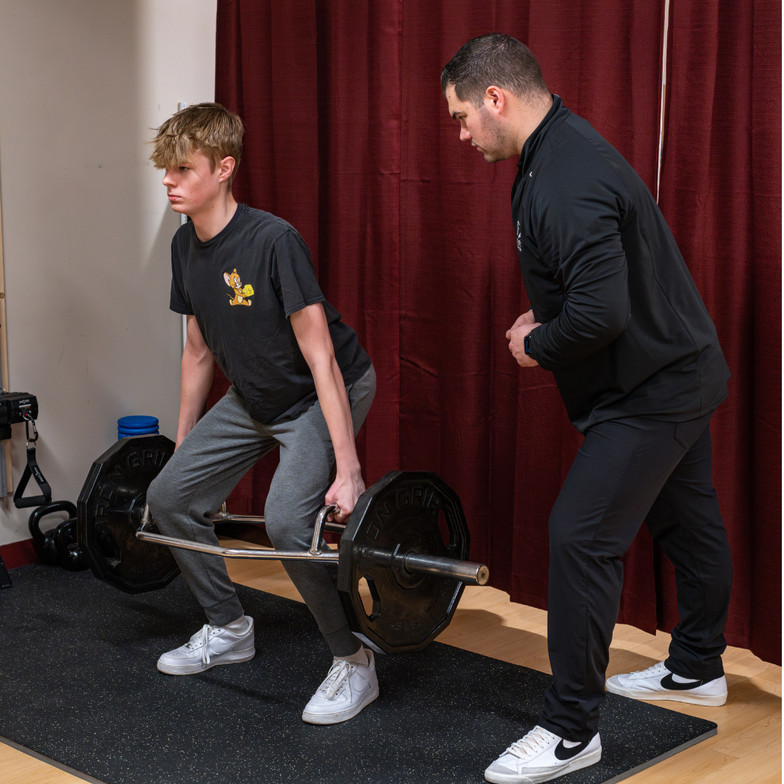
As summer looms, we tend to get a “second wind” on our New Year’s resolutions, and the prioritization of health and fitness peaks once again. Additionally, this a pivotal time for most athletes to continue to build upon athleticism. Through these summer months, it's crucial to recognize the role of recovery and how it optimizes performance. Whether you're a weekend warrior, pickleball enthusiast, middle school, high school, collegiate, or professional athlete, understanding the science behind recovery and exploring avenues like chiropractic care can significantly enhance your athletic prowess. Within the Madison and greater Huntsville region, we have athletes of all skill levels and background. Dr. Sarazen at Resilience Spine & Sports Rehab understands the importance of these summer months and ensures his patients are given appropriate recovery and rehabilitative insights and treatment.
The Importance of Recovery in Sports Performance
Research consistently highlights the indispensable nature of recovery in achieving peak athletic performance. A study published in the Journal of Strength and Conditioning Research emphasized that inadequate recovery negatively impacts performance and increases the risk of injury among athletes (Bishop et al., 2008). Furthermore, the American College of Sports Medicine underscores that insufficient recovery leads to decreased muscle glycogen stores, impaired immune function, and overall fatigue, hindering athletic progression (Kreher & Schwartz, 2012).
Summer Training and Increased Physiological Demands
Summer brings unique challenges for athletes, with soaring temperatures and prolonged outdoor activities intensifying physical exertion. A report by the NATA (National Athletic Trainers' Association) emphasizes the heightened risk of dehydration, heat-related illnesses, and muscle cramps during summer training sessions and competitions (Casa et al., 2015). Amidst these challenges, prioritizing effective recovery strategies becomes paramount to sustain performance and mitigate the risk of injuries.
The Role of Resilience Spine & Sports Rehab in Enhancing Recovery
Chiropractic care with adjunctive exercise therapy offers a holistic approach to enhancing recovery and optimizing sports performance. Research suggests that chiropractic interventions, including spinal manipulation, soft tissue therapies (Active Release Technique™, Dry Needling, IASTM aka muscle “scraping”) can alleviate musculoskeletal imbalances, improve joint mobility, and promote faster recovery from injuries (Hoskins & Pollard, 2010). Athletes treated here at Resilience Spine & Sports Rehab also consistently report reduced muscle fatigue and enhanced sports performance in between exercise bouts or periods of competition.
Investment in Athlete Healthcare
Professional athletes recognize the importance of investing in their healthcare. According to a report by ESPN, NBA players alone spend an average of $42,500 per year on healthcare-related expenses, including medical treatments, physical therapy, and recovery modalities (Windhorst, 2020). This substantial investment underscores the value that athletes place on maintaining peak physical condition and optimizing their performance potential through comprehensive healthcare strategies.
We’re Here to Help
As athletes gear up for summer sports activities, recognizing the pivotal role of recovery is paramount for sustaining performance and minimizing injury risks. Incorporating Resilience Spine & Sports Rehab into your wellness regimen, alongside prudent investment in healthcare, can provide a competitive edge by promoting faster recovery, enhancing neuromuscular function, and optimizing musculoskeletal health. By prioritizing recovery & leveraging rehabilitative principles, athletes can unlock their full potential and thrive in the summer sports arena. Whether it’s rehabilitating an injury, enhancing exercise technique, or anything in between, we at Resilience Spine & Sports Rehab are here when you need it most.
References
- Bishop, P., Jones, E., & Woods, A. K. (2008). Recovery from training: A brief review. Journal of Strength and Conditioning Research, 22(3), 1015-1024.
- Kreher, J. B., & Schwartz, J. B. (2012). Overtraining syndrome: A practical guide. Sports Health, 4(2), 128-138.
- Casa, D. J., Csillan, D., Armstrong, L. E., Baker, L. B., Bergeron, M. F., Dragoo, J. L., ... & Yeargin, S. W. (2015). Preseason heat-acclimatization guidelines for secondary school athletics. Journal of Athletic Training, 50(9), 986-1000.
- Hoskins, W., & Pollard, H. (2010). The effect of a sports chiropractic manual therapy intervention on the prevention of back pain, hamstring and lower limb injuries in semi-elite Australian Rules footballers: A randomized controlled trial. BMC Musculoskeletal Disorders, 11(1), 64.
- Lauro, A., & Mouch, B. (1991). Chiropractic effects on athletic ability. Journal of Manipulative and Physiological Therapeutics, 14(7), 399-402.
- American Chiropractic Association. Sports Injuries. Retrieved from https://www.acatoday.org/Patients/Health-Wellness-Information/Sports-Injuries
- Windhorst, B. (2020, December 10).
- Inside the cost of health care for NBA players. ESPN. Retrieved from https://www.espn.com/nba/story/_/id/30484042/inside-cost-health-care-nba-players
.jpg)
.jpg)



